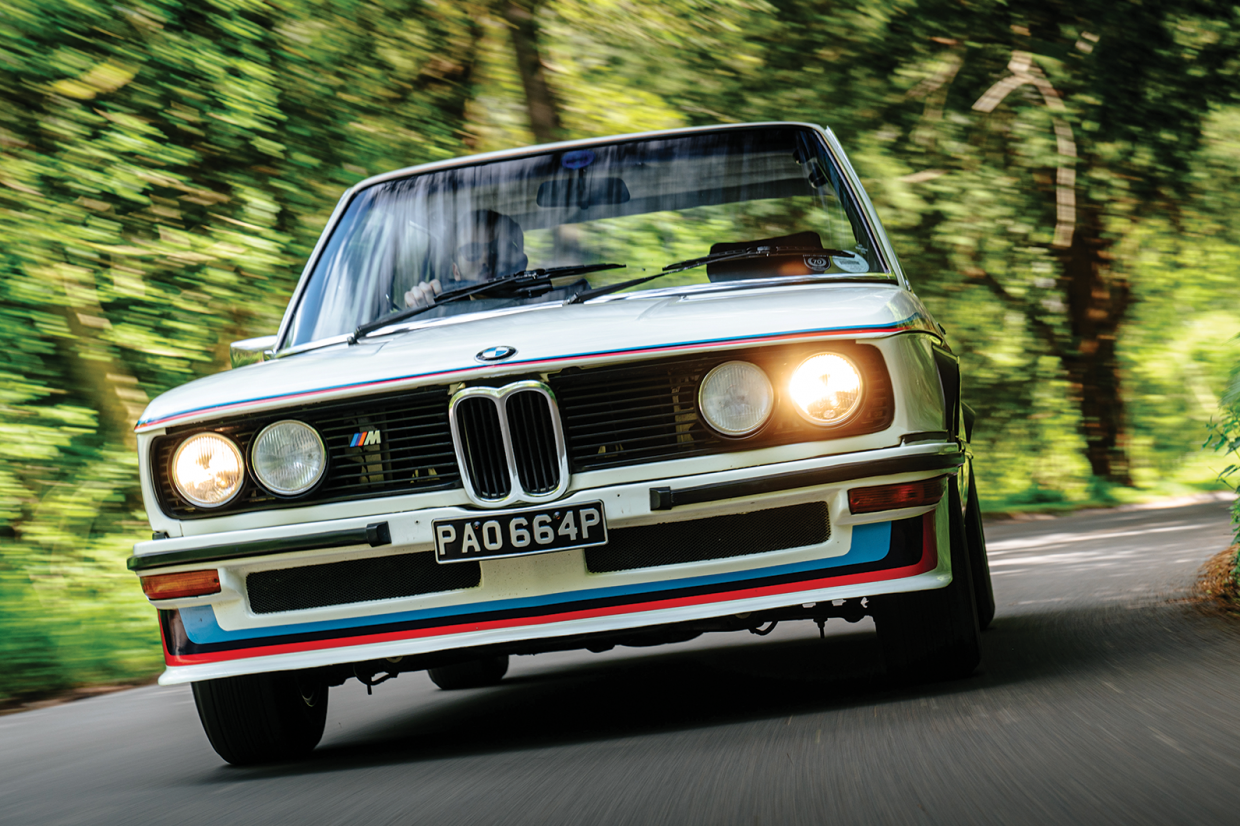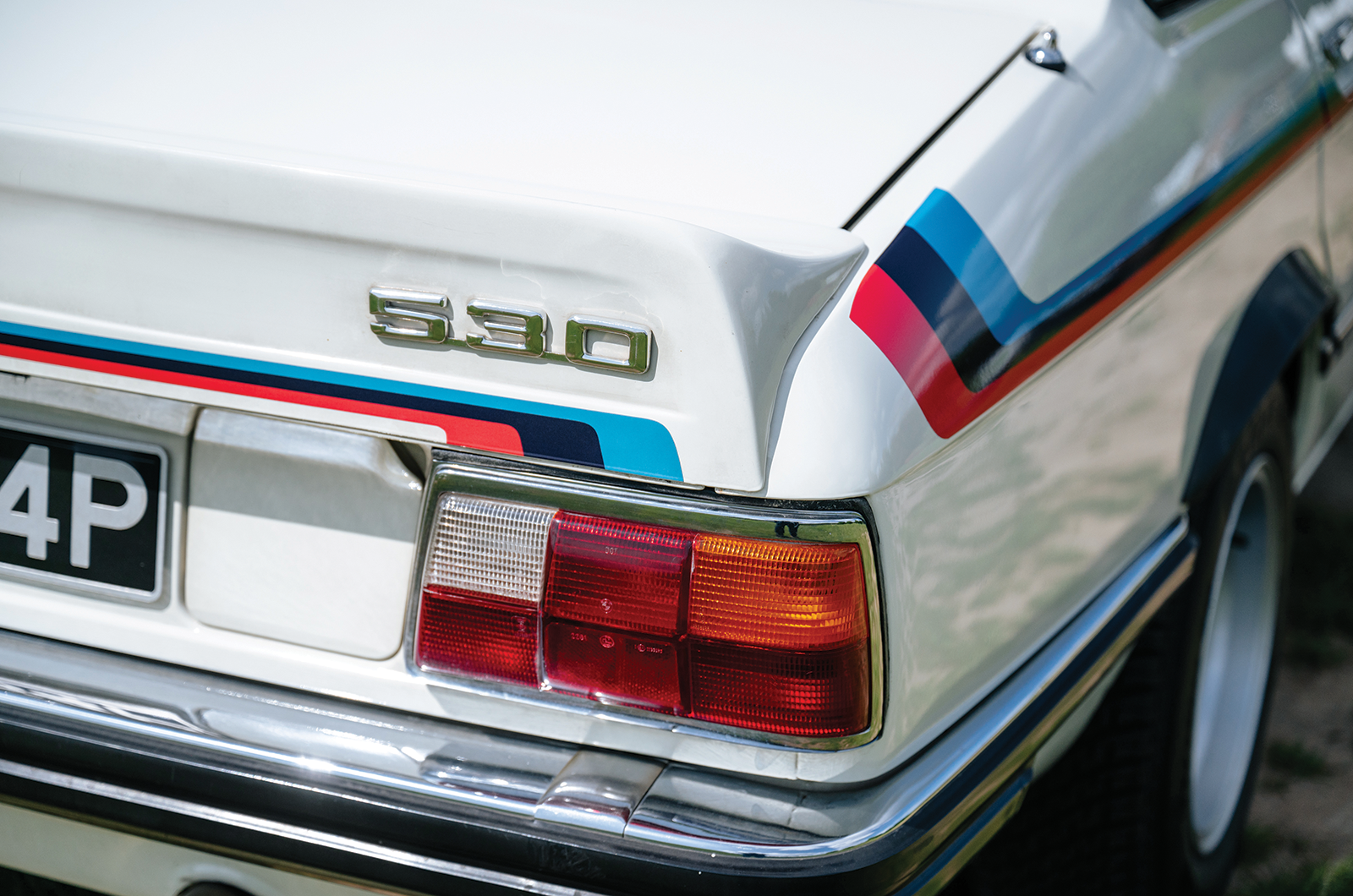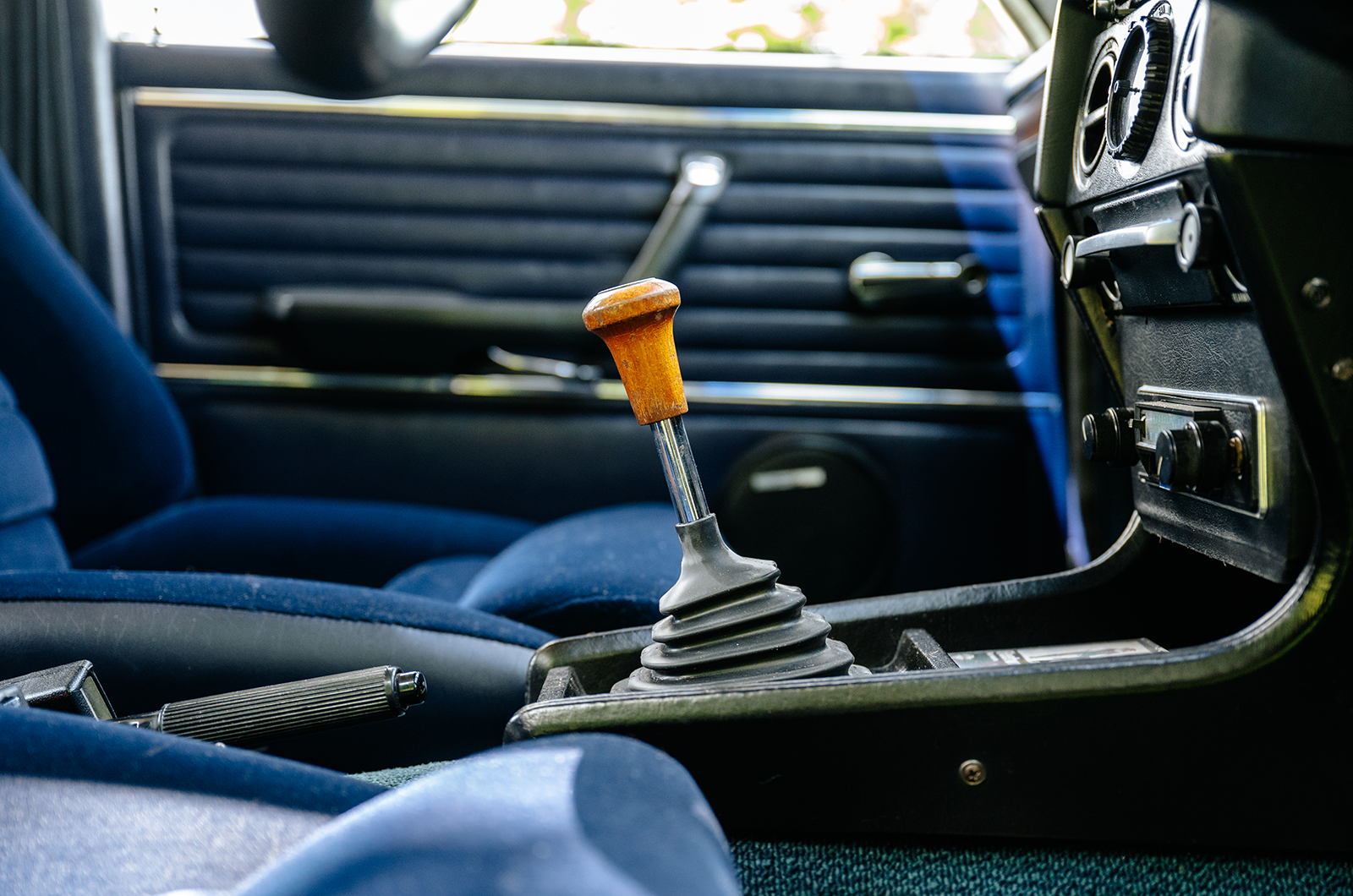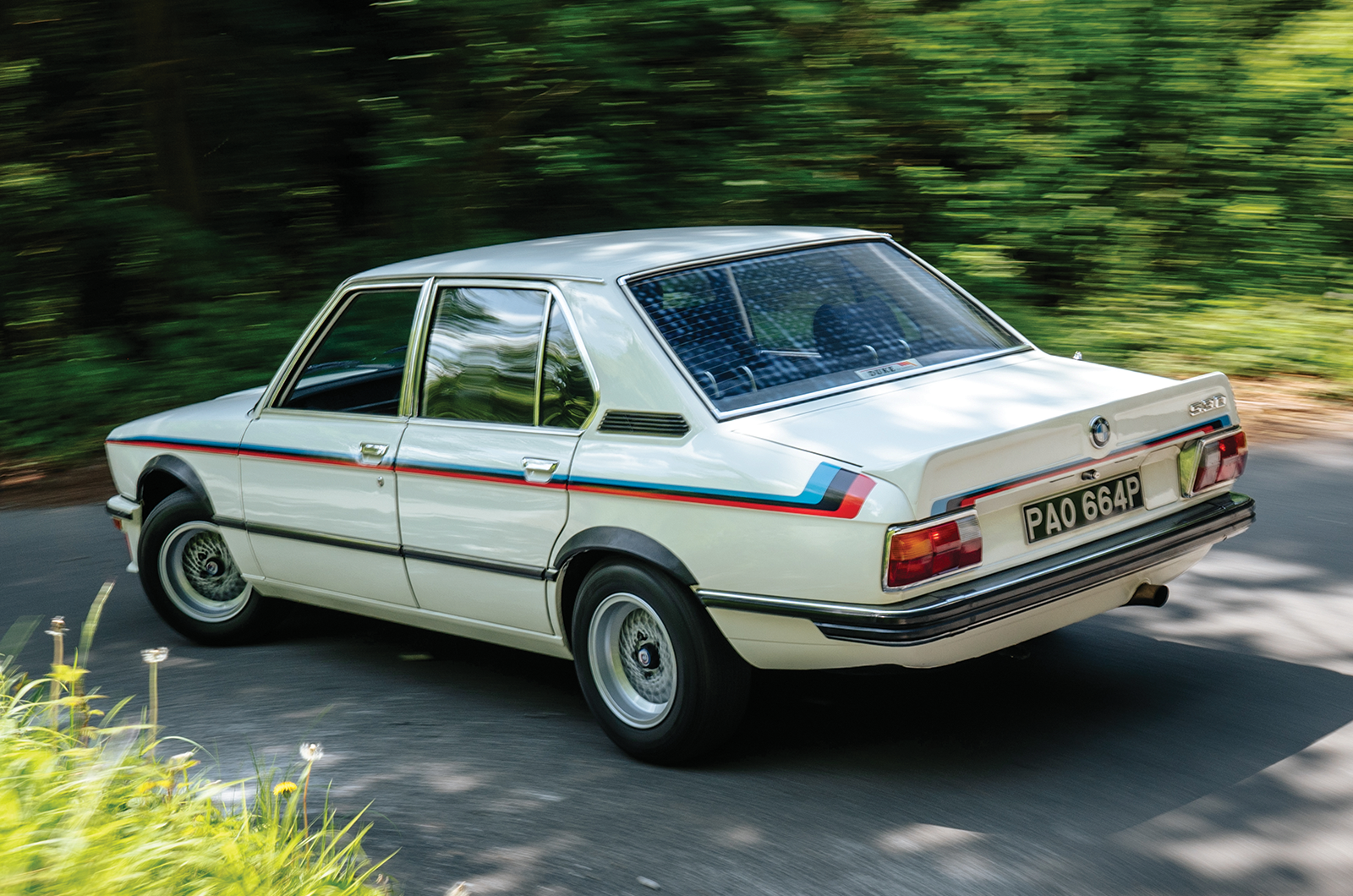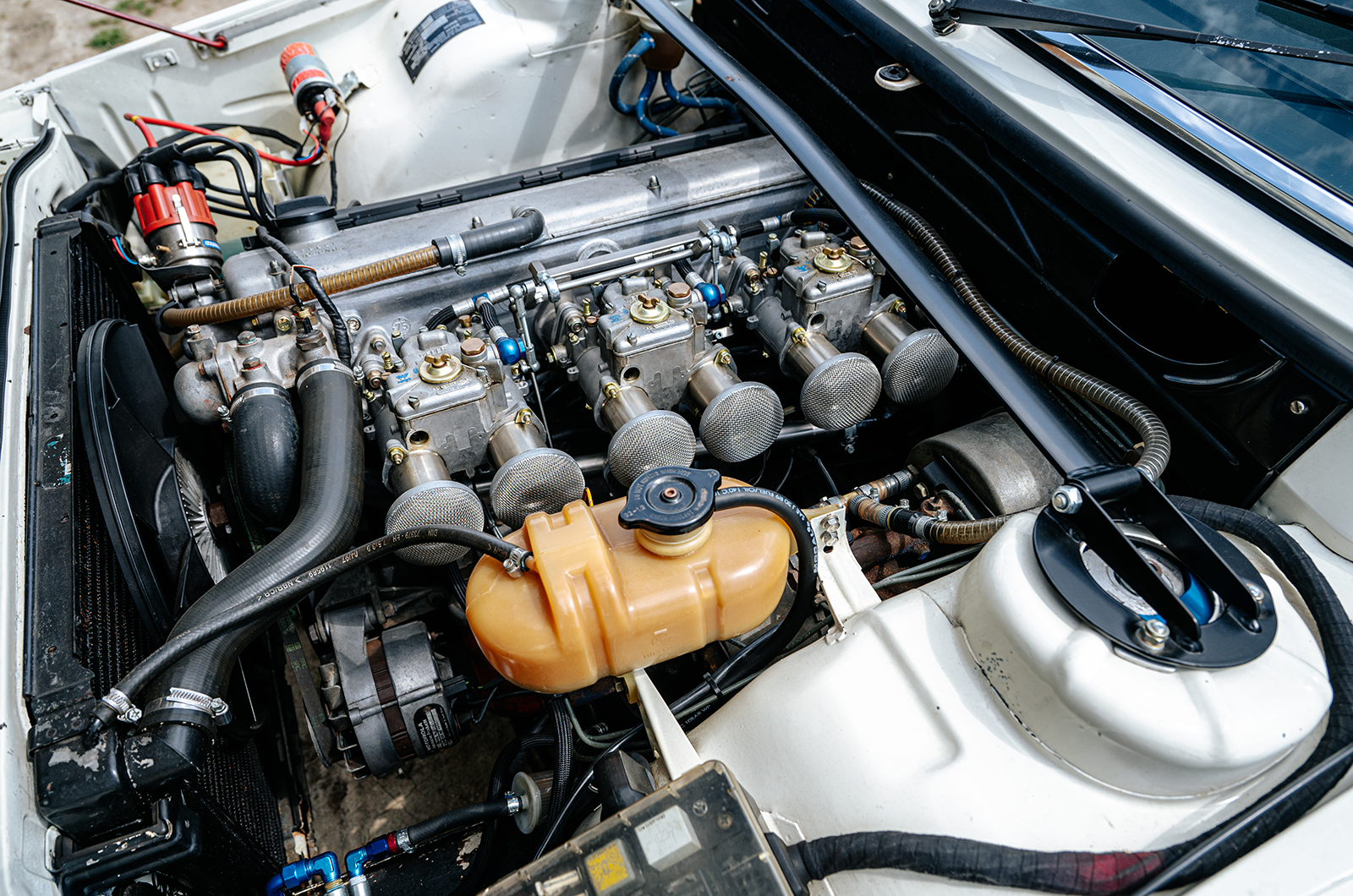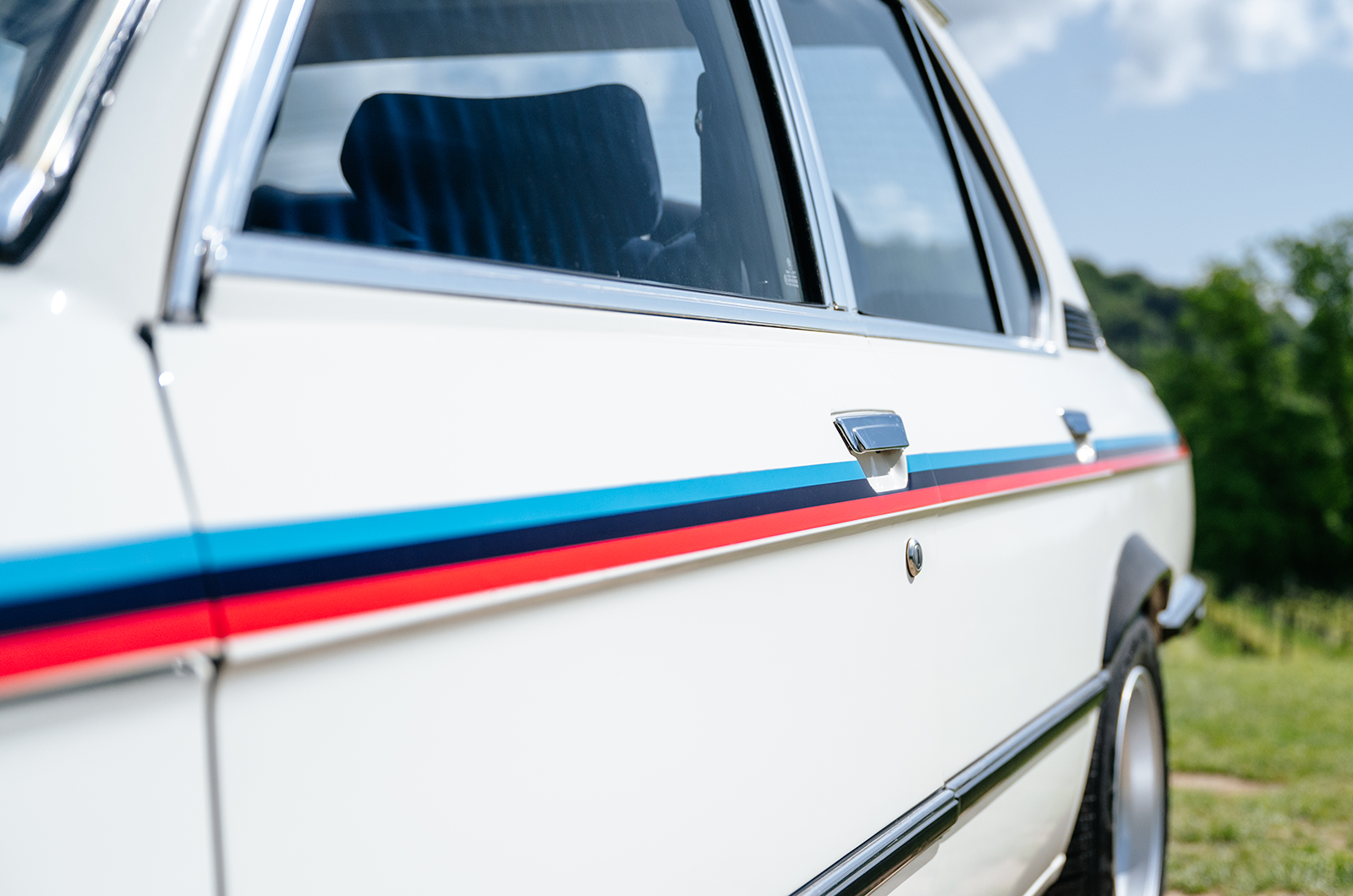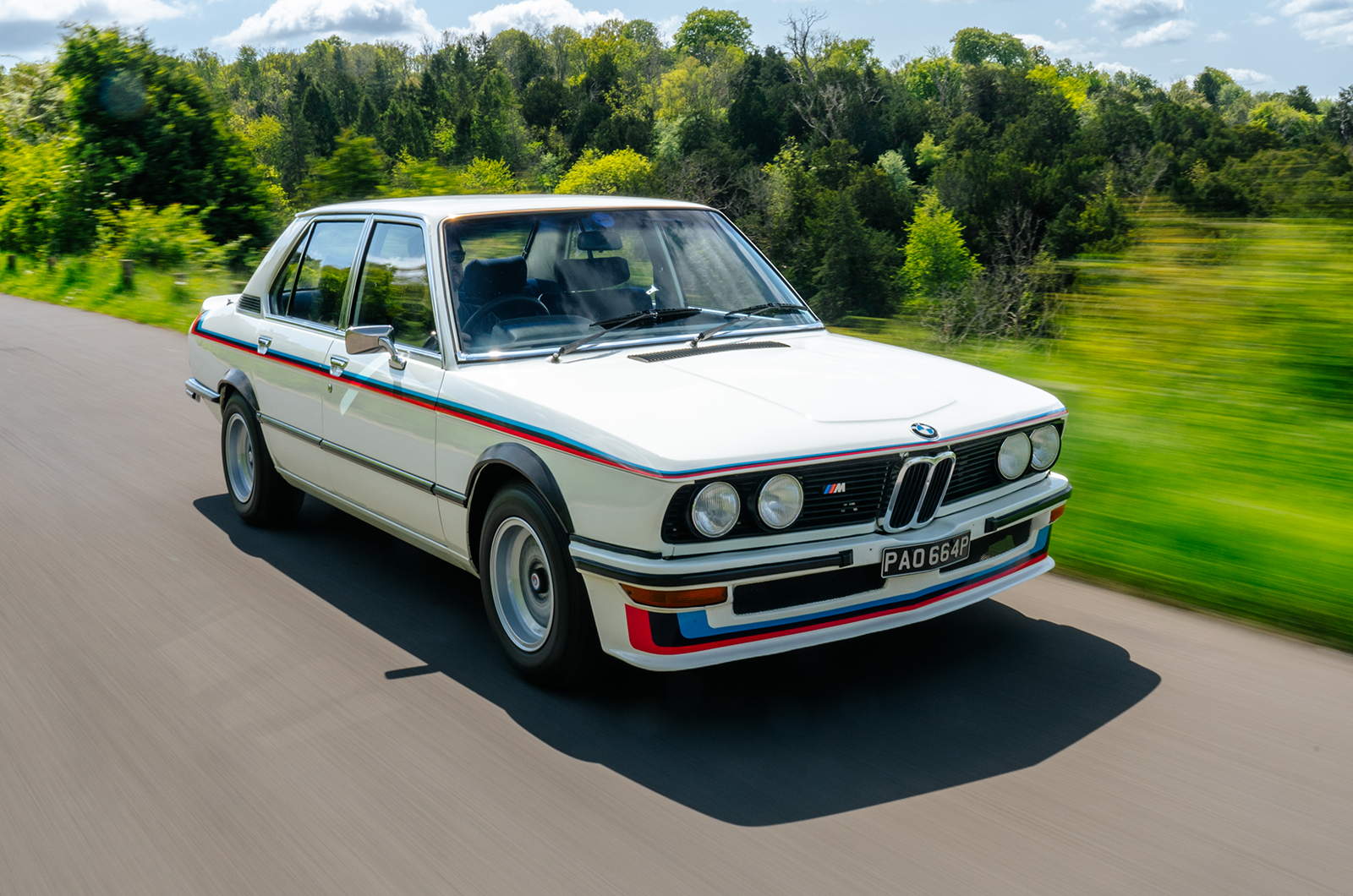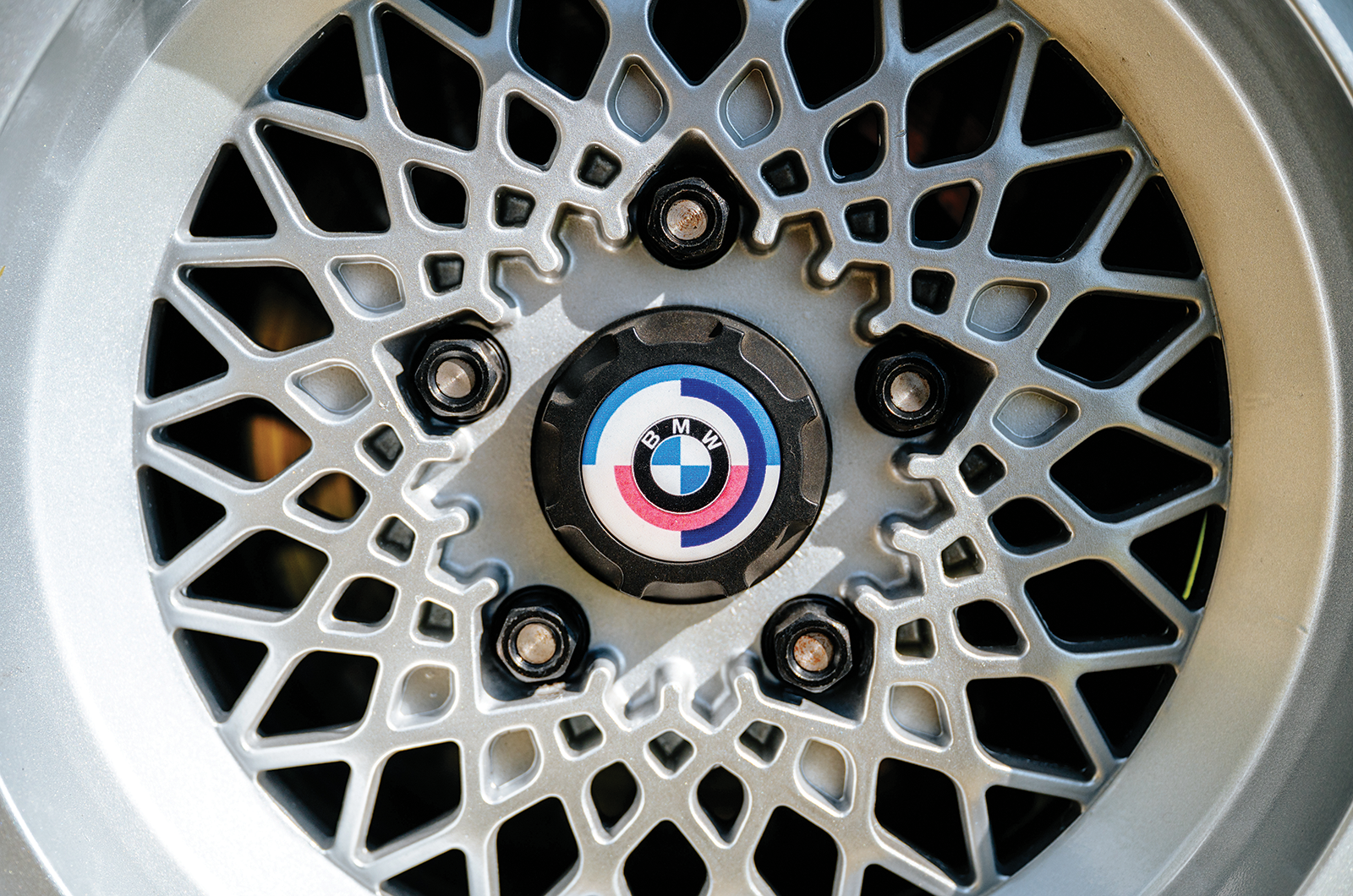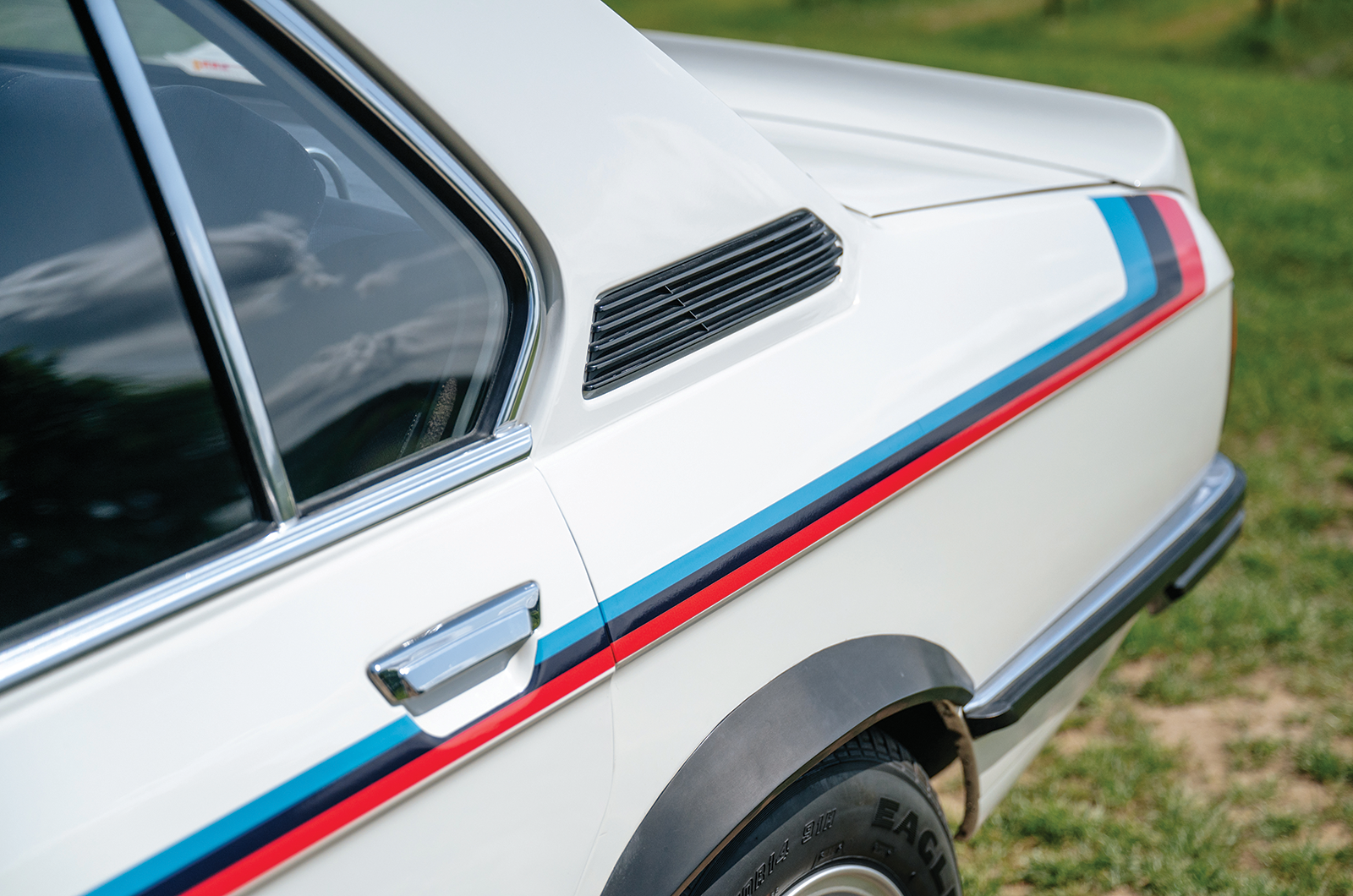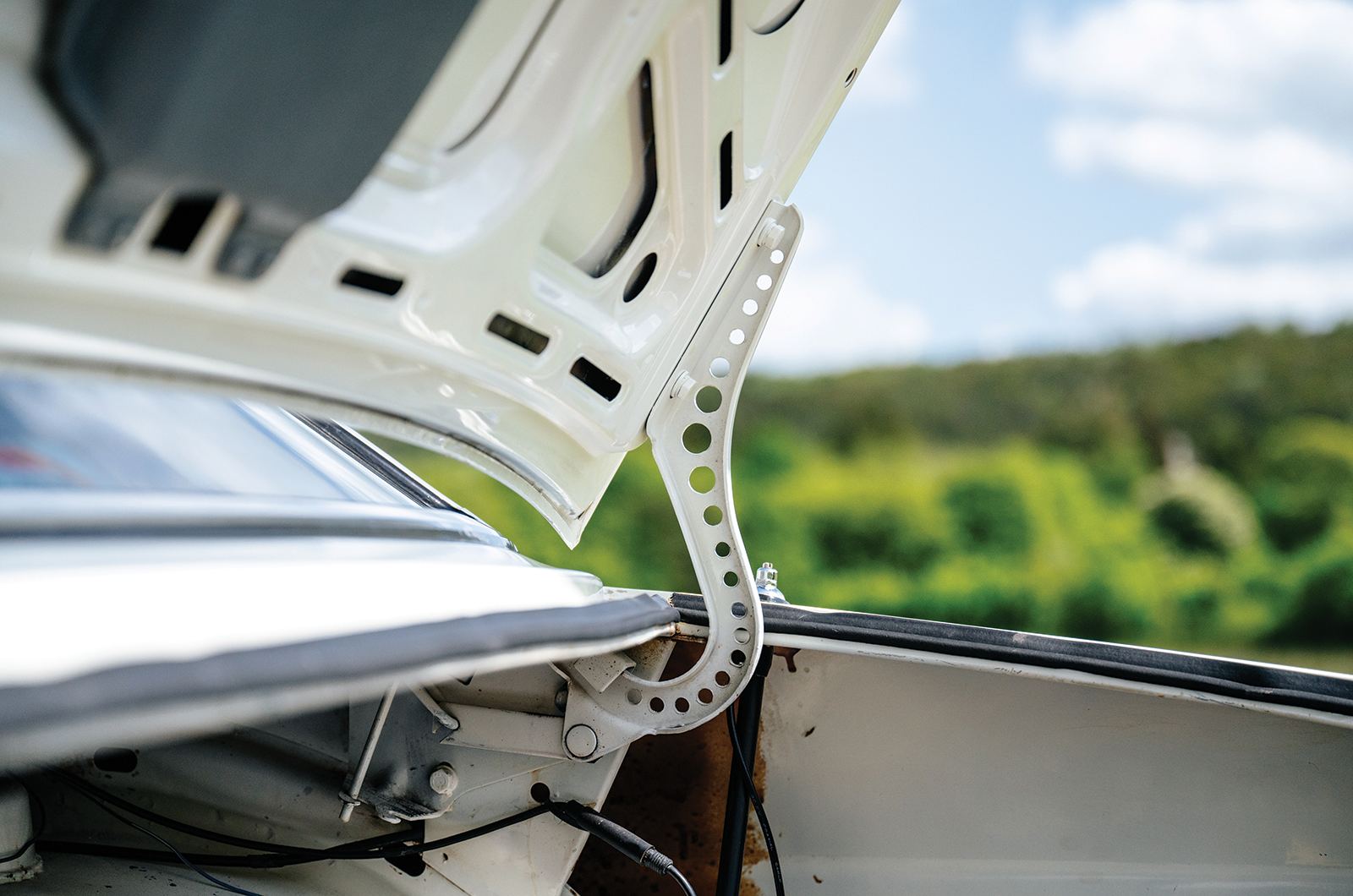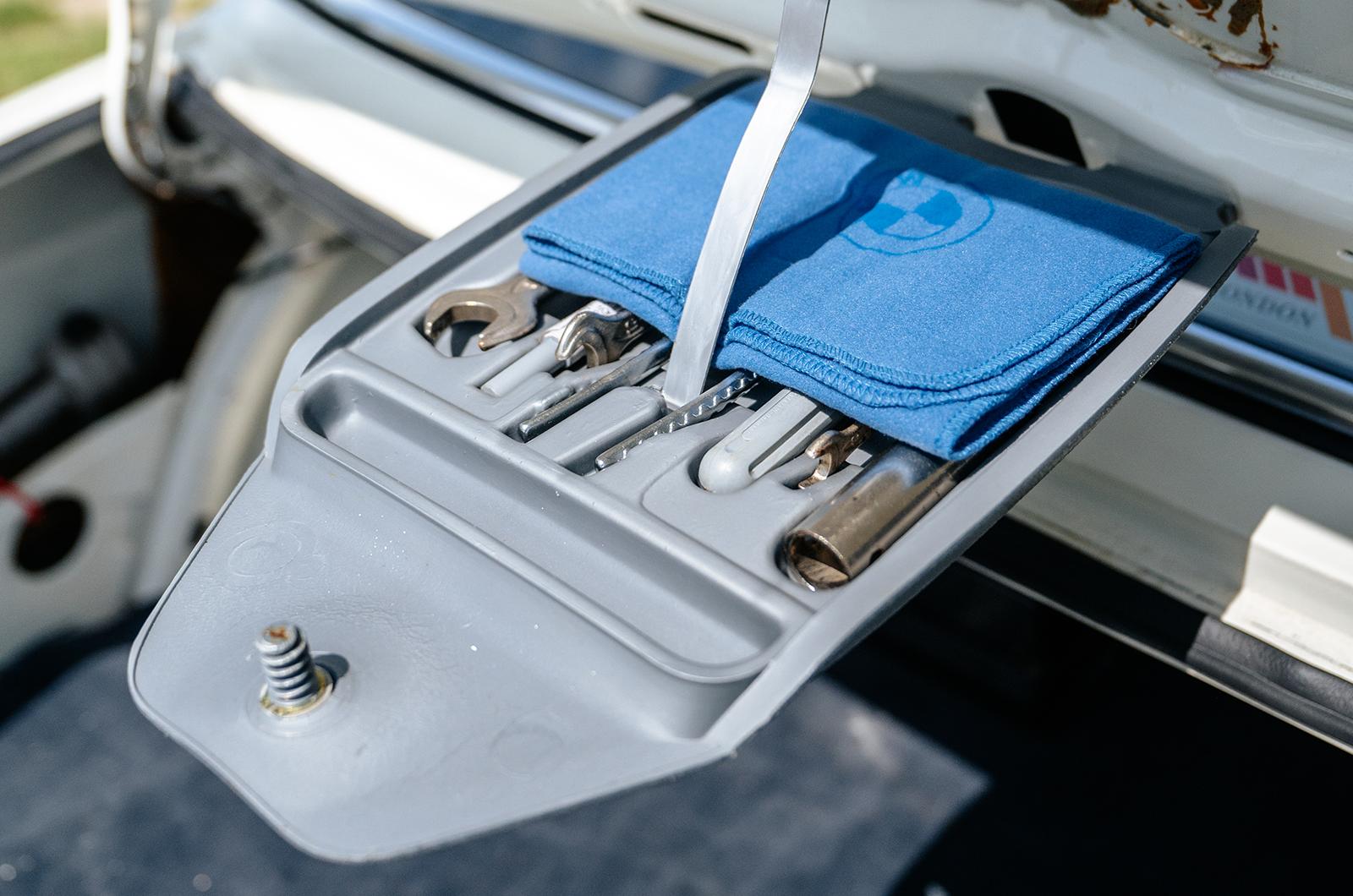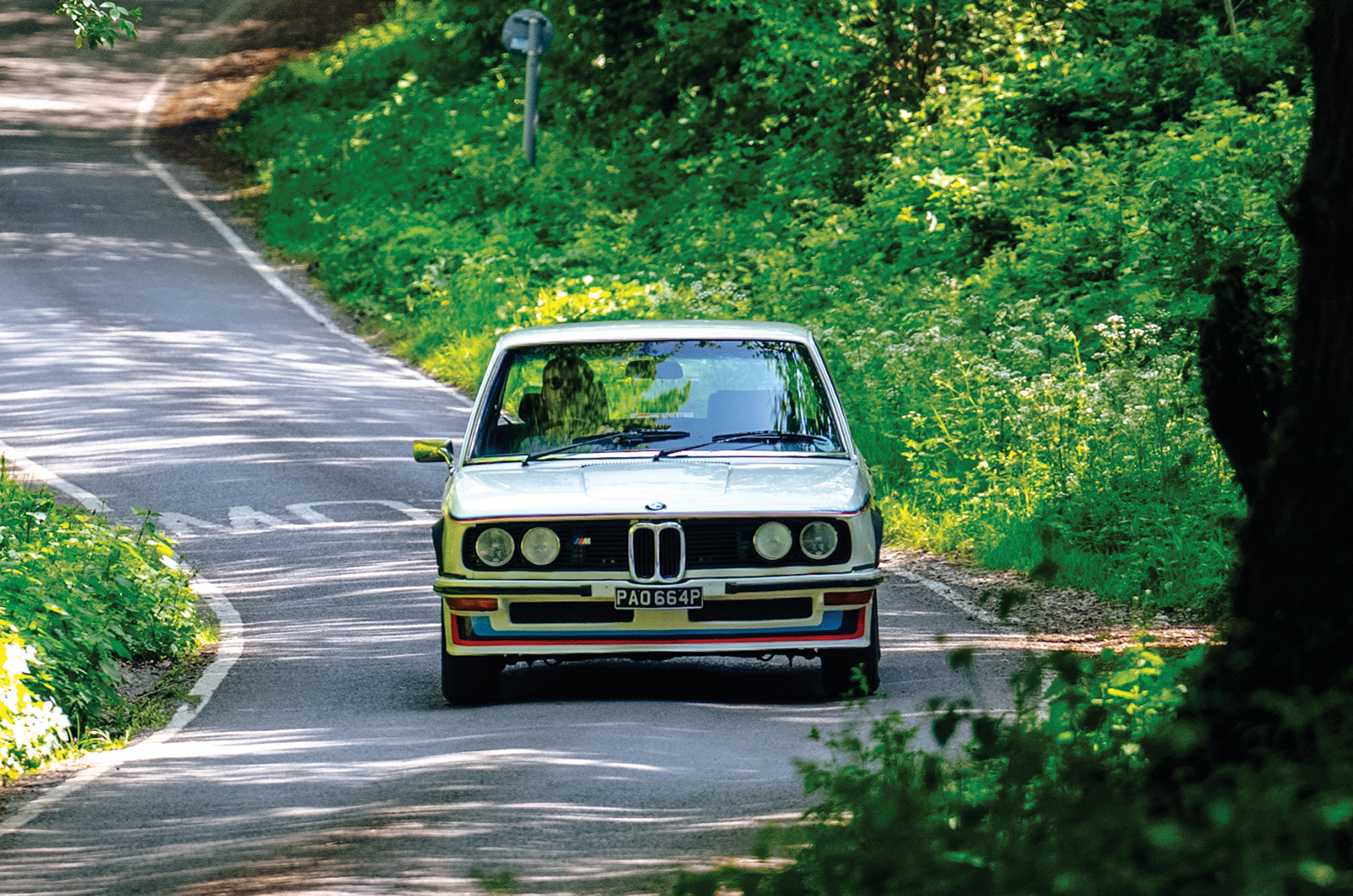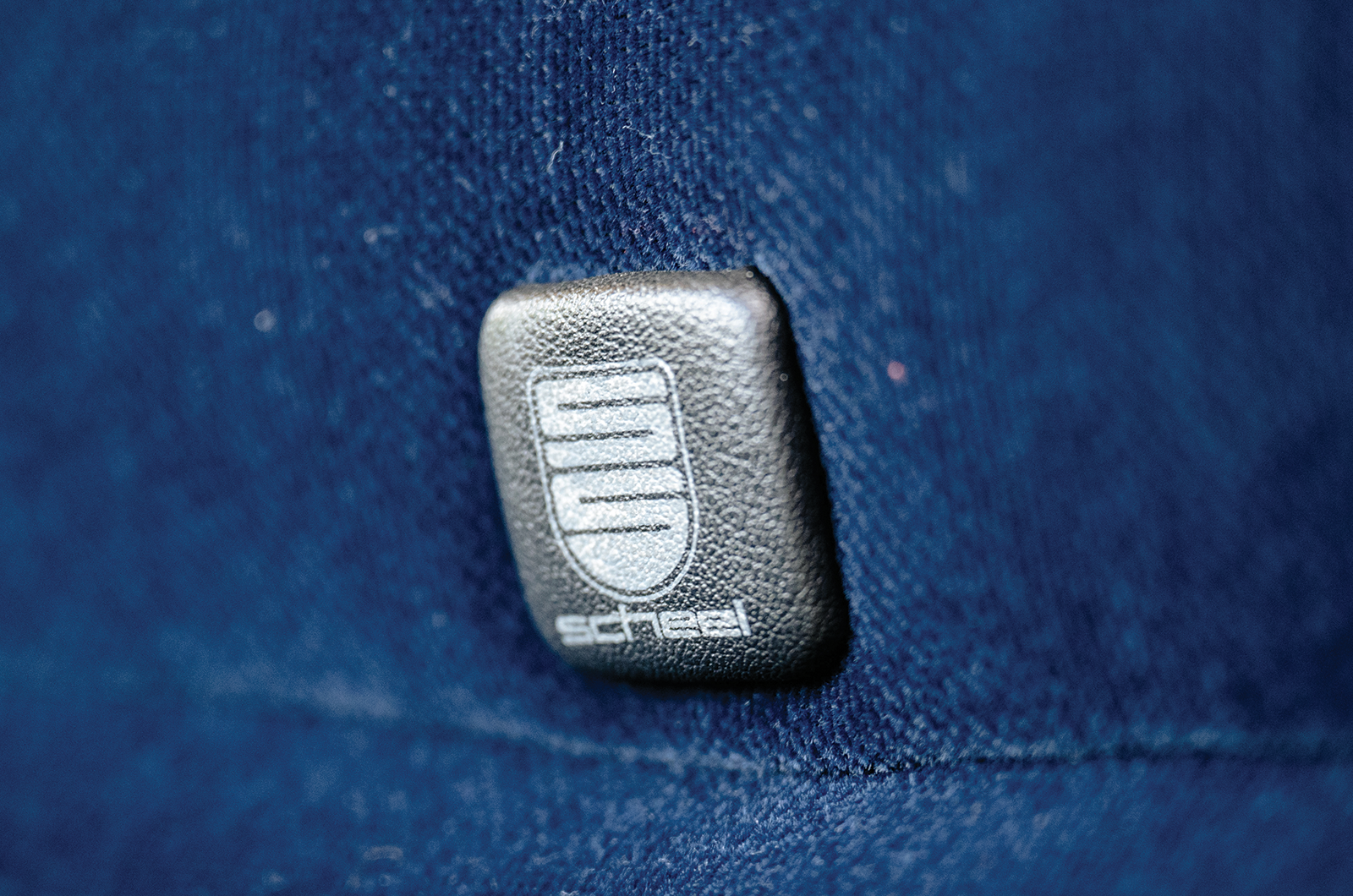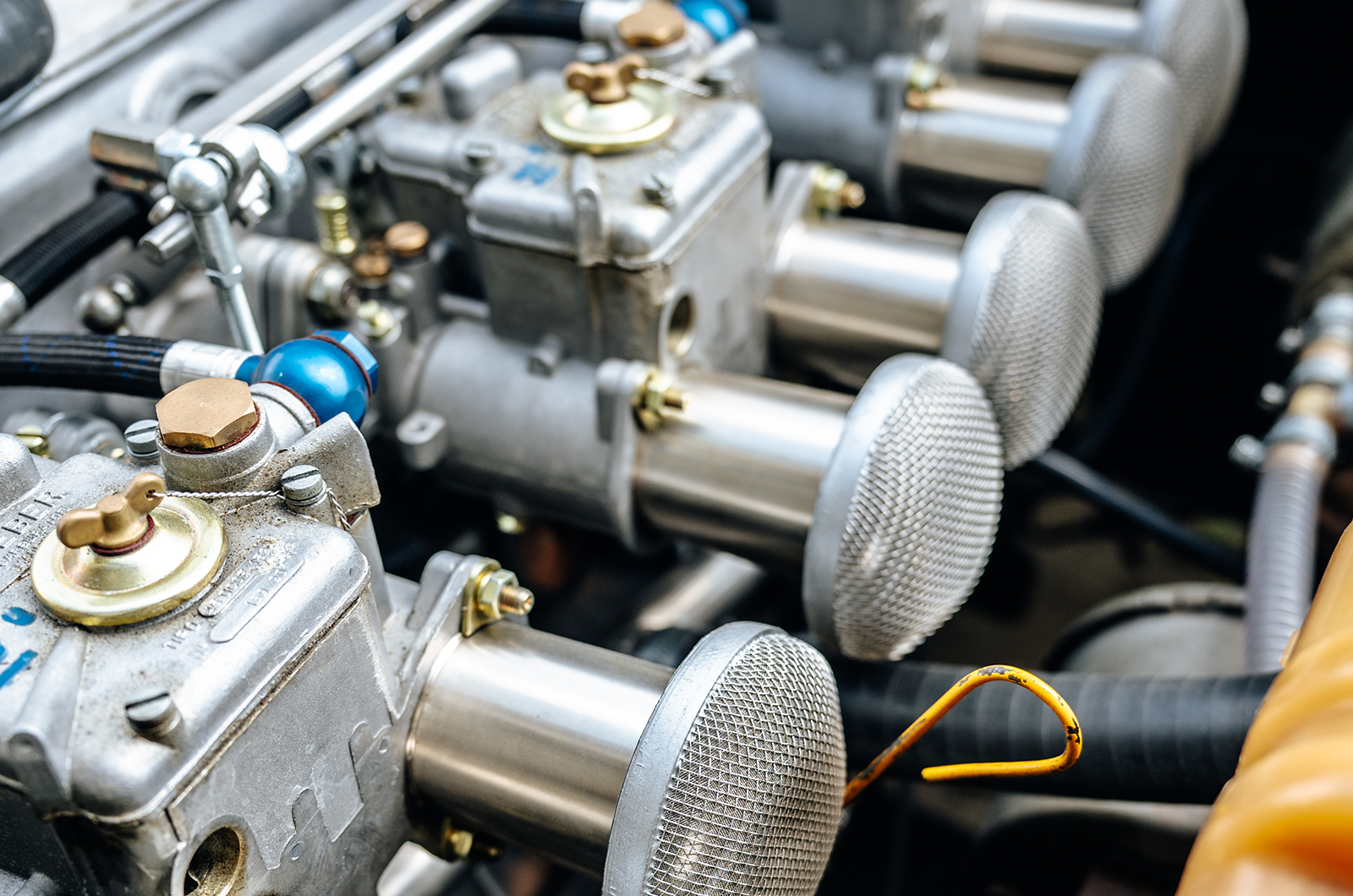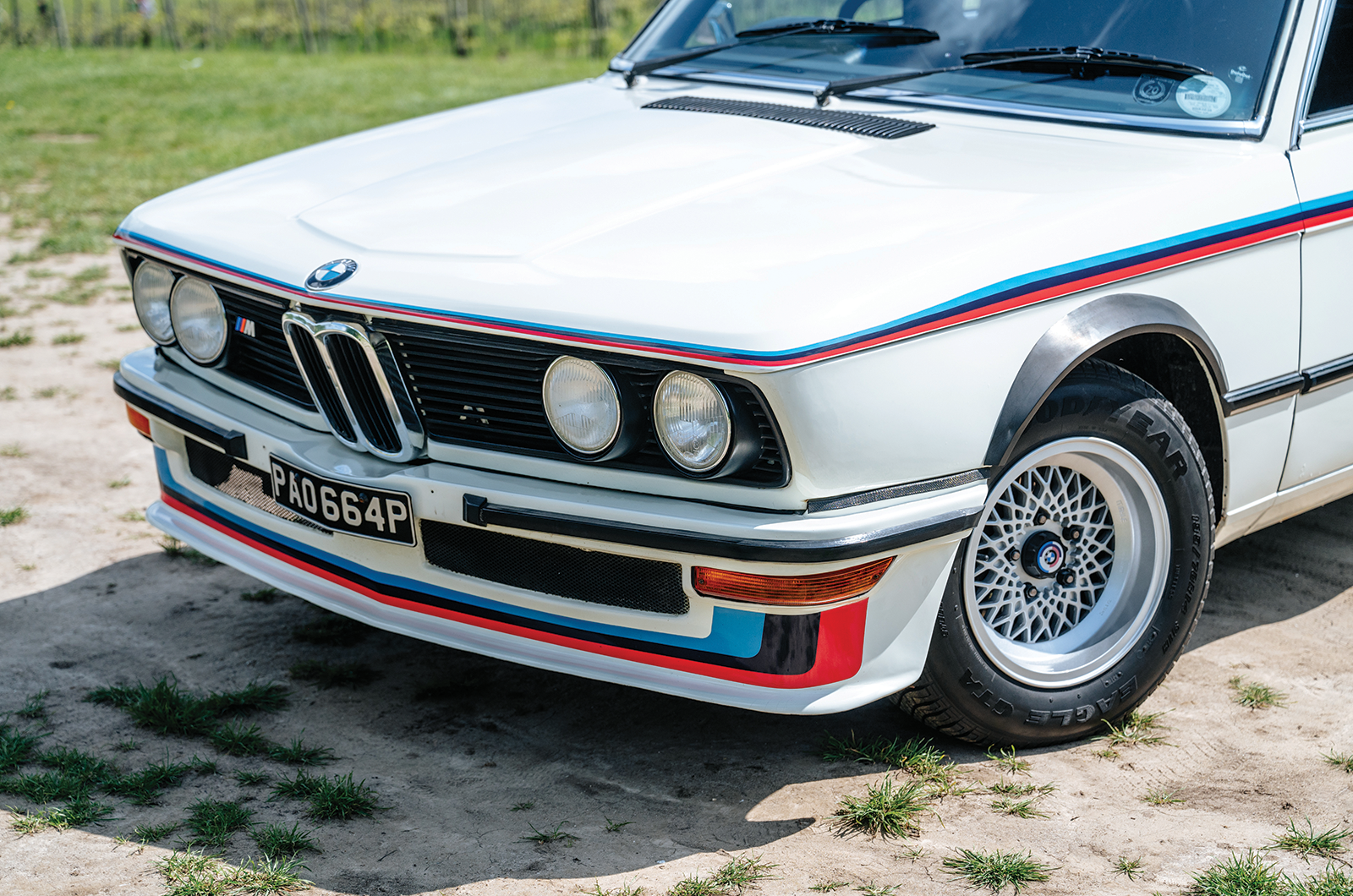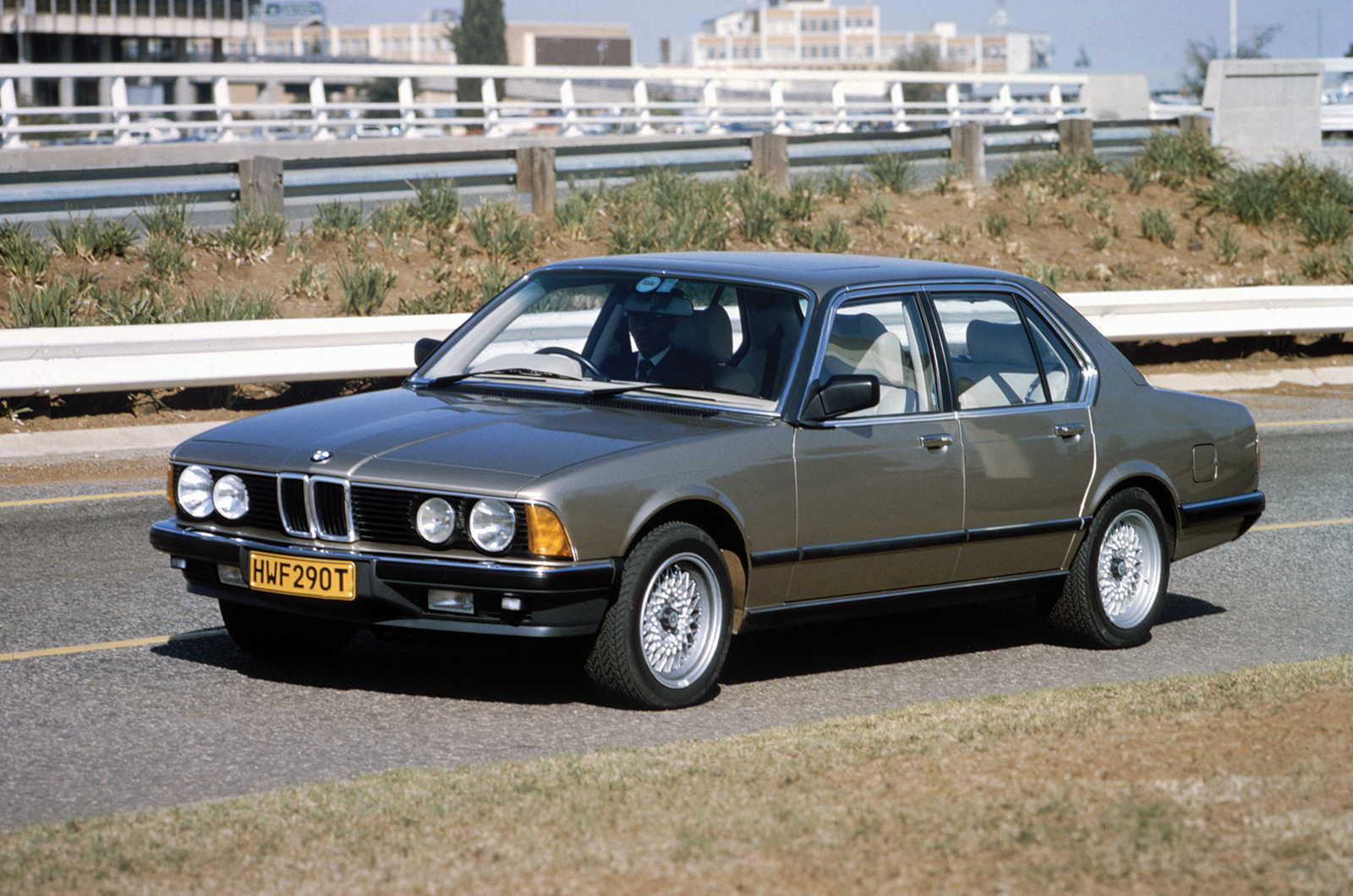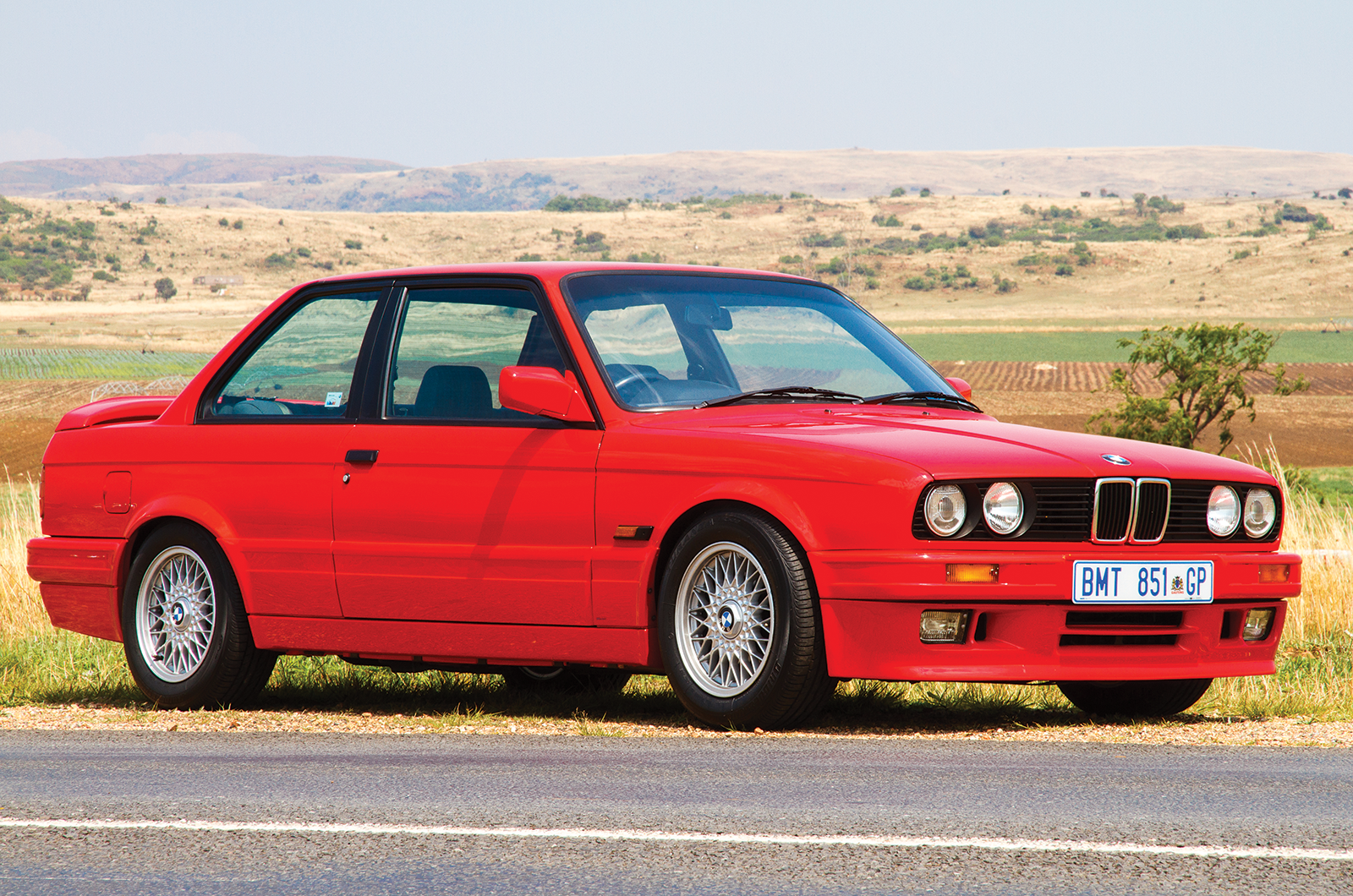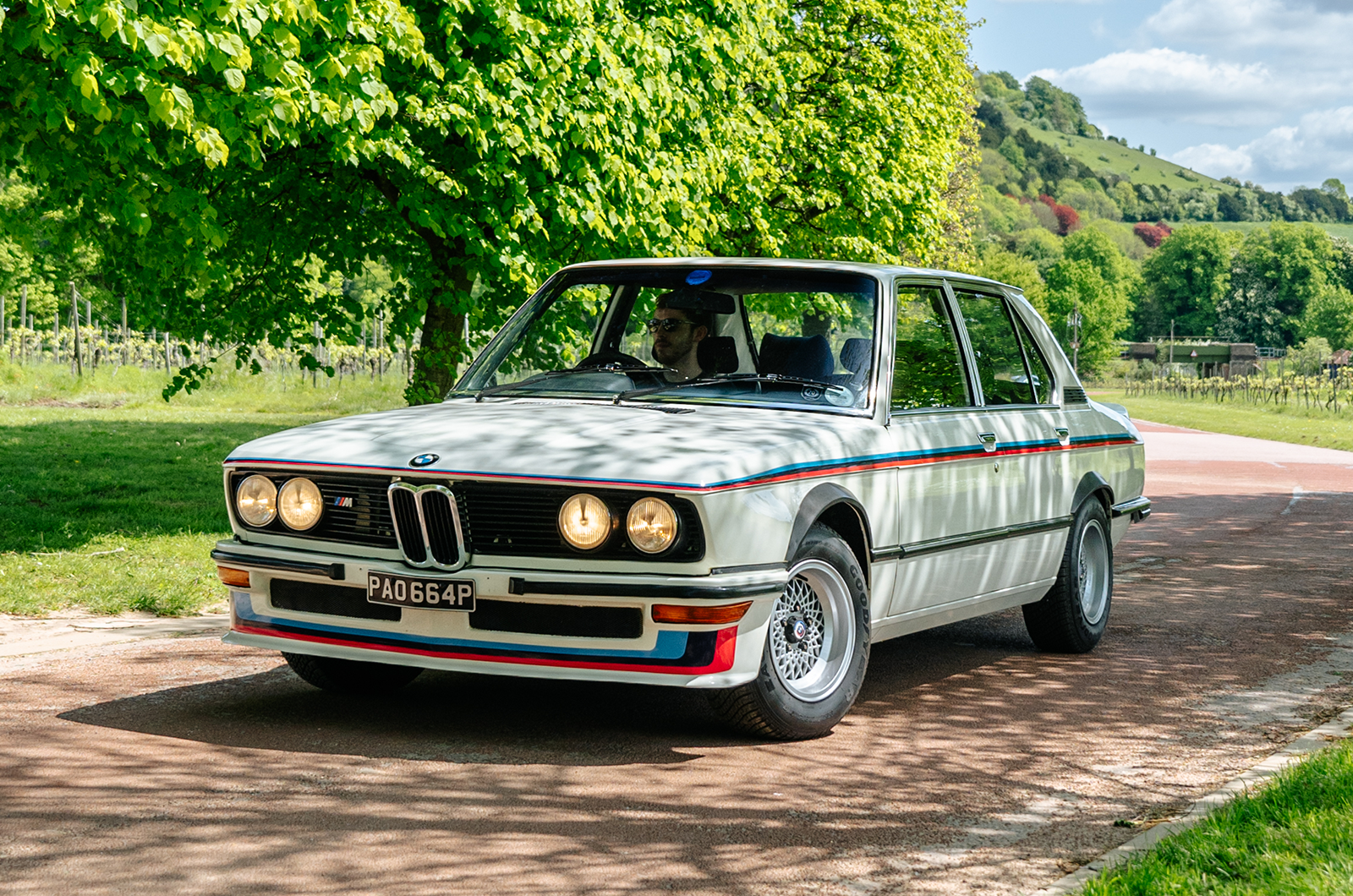Thanks to the general refinement of the 5 Series on which it is based, however, the MLE never feels rough, uncouth or uncomfortable.
Even with all that weight loss it doesn’t rattle inside and, despite the stiffened suspension, it is still very much a road-biased set-up.
Tackling a typical British back-road, including all of the undulations and sudden potholes that involves, reveals a firm but extremely well-controlled ride.
It isn’t the last word in isolation, that’s for sure, but where you expect those rear trailing arms to get flustered as the car hits a nasty surface on an adversely cambered corner, the BMW stays true.
The front hosts Scheel bucket seats
With an almost unique mix of power and lightweight agility on the one hand, plus luxury and strength on the other, it isn’t hard to see why the 110 MLEs BMW SA needed to build flew out of showrooms, despite being about twice the price of a contemporary 520.
The current condition of British lanes being what it is – surely not much better than the rural routes of ’70s South Africa – today has quickly demonstrated how well the 530 MLE suits twisty roads with poor surfaces in a way that the later German-built M cars don’t.
This MLE is a survivor in brilliant condition that only came to the UK three years ago, saving its bodywork, and is one of that initial run of 110 homologation cars built in 1976.
‘Breathing through triple Webers muffled only by mesh-topped trumpets, the high-rev bellow comes straight from the track’
Because of their success and profitability, however, a further 117 were built the following year – and, unlike those first cars, it was no longer a case of ‘one size fits all’.
The car was now available in three colours, and options such as power steering and electric windows were added.
“The success of the 530 MLE was a pure example of ‘what wins on Saturday sells on Monday’,” said then CEO of BMW Group South Africa and sub-Saharan Africa Tim Abbott, when the company unveiled a 530 MLE it had restored in 2019.
“It paved the way for BMW South Africa as a sporty brand and a serious motorsport contender in the country.”
The deep front airdam on the BMW 530 MLE
To this day, BMW is adamant that the M1 was the first M car.
That was the intention after all, before the delaying debacle of Lamborghini’s involvement in the model, and it suits the brand to have a dramatic supercar as the starting point.
Certainly it flatters the narrative better than a small run of cars built thousands of miles from Germany, in Apartheid South Africa.
Had BMW SA given it the M530 badge, the case would be pretty unequivocal but, semantics aside, the MLE’s legacy beyond its home market was in setting the blueprint for the modern BMW supersaloon for which the brand has become most loved.
The influence of this car on the M535i – the model that brought the concept to Europe and to thousands more customers – is obvious at a glance.
Images: Jayson Fong
Thanks to: Ian Bergin and Duke of London
BMW South Africa’s block-party specials
The white ducktail spoiler is unique to the MLE – the M535i got a similar item in black
The MLE was the first in a series of bespoke performance models built at the Rosslyn works.
Headed by the bold, petrolheaded Bernd Pischetsrieder (later the chairman of BMW in the 1990s), BMW SA created a line of motorsport-derived models not sold anywhere else in the world.
1. BMW 745i (1984-’87)
The BMW 745i got the M1’s racy straight-six
Unusually, the 745i wasn’t born out of a need for homologation, but as a result of the impossibility of fitting the German-built 745i’s turbocharged engine in a right-hand-drive car.
Keen for a high-performance 7 Series, BMW SA dropped in the 282bhp, 3.5-litre M88 straight-six as found in the M1.
It would be the only 7 Series ever fitted with a BMW M engine and 249 were built, including 17 with a five-speed manual transmission, in which form they were among the fastest saloons of the day.
The car also trialled a new Nappa leather interior, which then became available on 7 Series worldwide as a ‘Highline’ option.
Two 745i racing cars were built, and were successful in the highly modified Group 1 and later Group A championships.
2. BMW 333i (1985-’87)
The BMW 333i was South Africa’s equivalent of the M3
While the E30 M3 dominated race circuits in Europe with a 2.3- or 2.5-litre four-cylinder engine, BMW SA wanted to continue racing with a big ‘six’ in the mid-1980s and decided that the 2.5-litre straight-six of the 325i wasn’t large enough.
A collaboration with Alpina led to the 3.2-litre lump from the 5/7 Series being shoehorned into the little 3 Series, an engine swap that left so little space the car could only be had with power steering or air conditioning – not both.
A dog-leg ’box was fitted and the car carried multiple Alpina details, such as orange instrument needles.
It effectively replaced the M3, a model not sold in South Africa, but only 204 were built by the time production ended after just two years, when the Group 1 regulations it was homologated for were cancelled.
3. BMW 325iS (1990-’91)
The 325iS was another homologation special built by BMW SA
The dominant saloon-car racing regulations in South Africa changed to Group N Class A in the late 1980s, and many manufacturers created homologation specials to conjure competitive cars for the new category.
Toyota had the Corolla RSi, but Opel proved BMW’s nemesis with its 16v Kadetts.
Once again, Alpina was brought in to fit one of its own units, this time a 2.7-litre straight-six, into the E30 3 Series.
Like the 333i, the model substituted the M3 in South Africa and, like that car, it had an Evo II revision to keep pace with its competitors on the race track.
It has become an icon of South African motoring and even the country’s rap culture, gaining the Zulu nickname ‘Gusheshe’ (a reference to its appeal to the opposite sex…).
Factfile
BMW 530 MLE
- Sold/number built 1976-’77/227
- Construction steel monocoque
- Engine iron-block, alloy-head, sohc 2986cc straight-six, twin Zenith 38/40 INAT carburettors
- Max power 197bhp @ 6000rpm
- Max torque 204lb ft @ 3700rpm
- Transmission five-speed Getrag 265 manual, RWD via LSD
- Suspension independent, at front by MacPherson struts rear semi-trailing arms, coil springs, telescopic dampers; anti-roll bar f/r
- Steering recirculating ball
- Brakes vented front, solid rear discs, with servo
- Length 15ft 2in (4620mm)
- Width 5ft 7in (1690mm)
- Height 4ft 8in (1426mm)
- Wheelbase 8ft 8in (2636mm)
- Weight 2718lb (1233kg)
- Mpg 22
- 0-60mph 9.3 secs
- Top speed 129mph
- Price new R10,595
- Price now £70-100,000*
*Prices correct at date of original publication
Enjoy more of the world’s best classic car content every month when you subscribe to C&SC – get our latest deals here
READ MORE
BMW E24 M635CSi vs E28 M5: dial M for more
Alpina C2 2.7: rare BMW meets its maker
Future classic: BMW M2 Competition
Charlie Calderwood
Charlie Calderwood is Classic & Sports Car’s Features Editor
